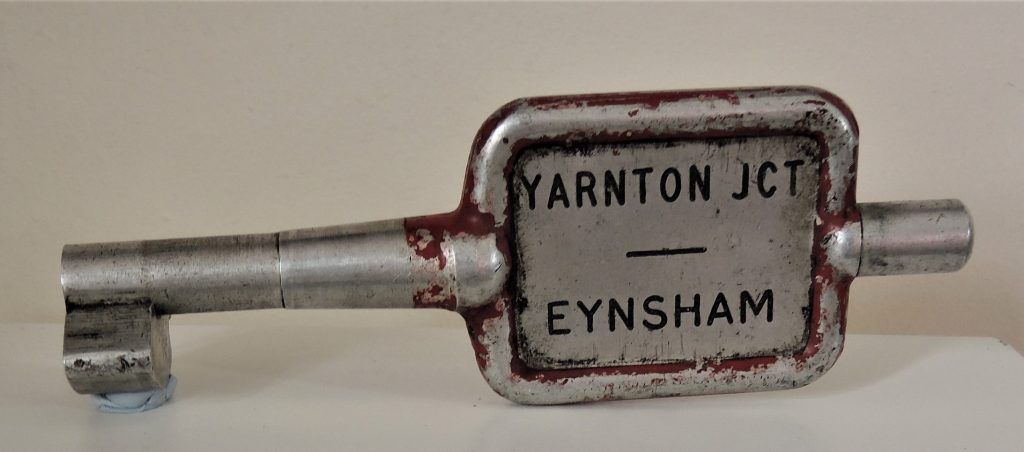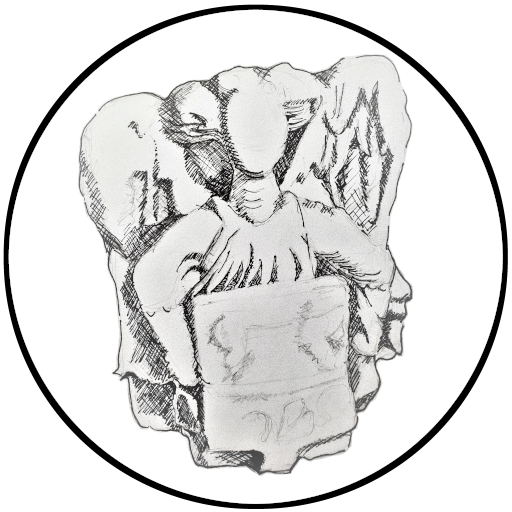
On single-track railway lines, it was vital to have a system in place to ensure that only one train could travel on a section of the track at any one time. When trains were still running through Eynsham (until the 1960s), the system used was the key token system.
A key token was a physical metal disc or key, like the one above. Each token was for use on one section of the track only, often between two stations. You can see from the engraving on our key that it was for use on the section of track running between Yarnton Junction and Eynsham Station.
A station master or signalman would give the relevant key token to the train driver at the station or signal point before the relevant section of track. The train driver could only enter the section of track if he was in possession of the key token. Without it, access would not be possible, thus ensuring that trains could not collide with each other. At the end of the journey, the driver would return the token.
The key token system was gradually phased out and replaced by electronic signalling.
